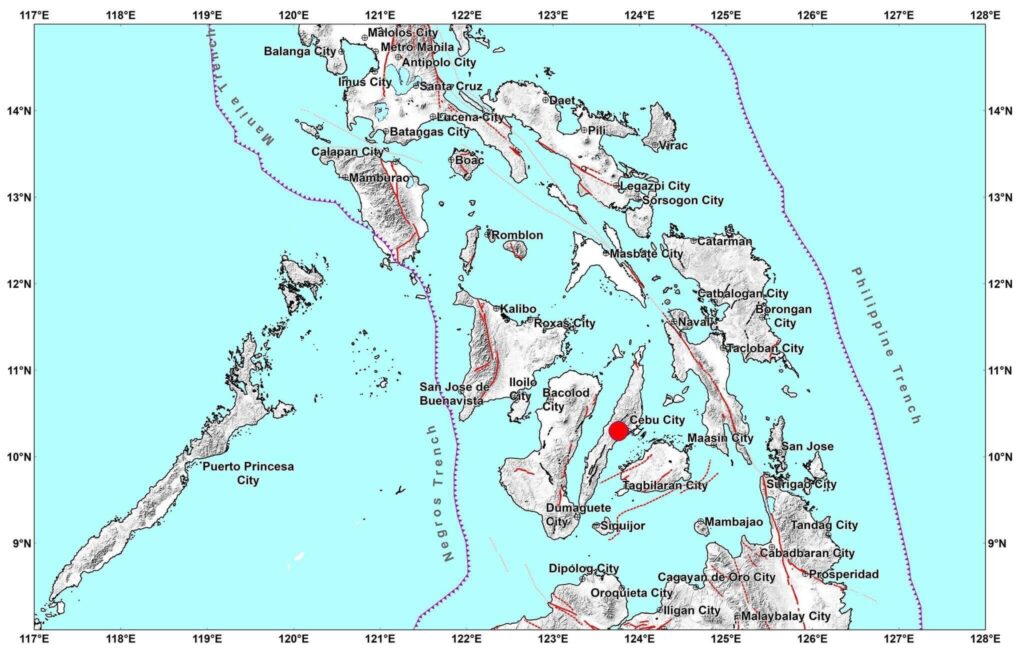
Phivolcs
CEBU CITY, Philippines — A shallow, 3.7-magnitude earthquake rocked Cebu on on Wednesday dawn, October 30.
The Philippine Institute of Volcanology and Seismology (Phivolcs) recorded the epicenter of the earthquake at six kilometers northwest of Minglanilla in southern Cebu, which occurred at 1:13 a.m.
Initially, Phivolcs measured the temblor’s strength at a magnitude of 2.7 in the Richter scale but a few hours later, they revised their earthquake bulletin and upgraded it to 3.7 magnitude. They also classified it at as a tectonic quake.
Tremors were also felt in other parts of Cebu, including the capital Cebu City which was located 19 kilometers north of Minglanilla.
No damages were reported as of this posting.
READ MORE:
Classes suspended in some Cebu areas after magnitude 5.1 quake
Earthquake preparedness saves lives: What to do
While the earthquake’s strength was relatively weak in the Richter scale, residents in Minglanilla reported on social media that the ground movement felt strong.
This could be attributed to the fact that Wednesday’s temblor had a depth of nine kilometers only.
Earthquakes with depths of between 0 to 70 kilometers are considered shallow quakes, according to the U.S. Geological Survey (USGS).
A quake’s destructive power depends not only on its strength, but also on location, distance from the epicenter and depth.
Quakes can strike near the surface or deep within the Earth. Most quakes occur at shallow depths, the USGS added.
Shallow quakes generally tend to be more damaging than deeper quakes. Seismic waves from deep quakes have to travel farther to the surface, losing energy along the way.
Shaking is more intense from quakes that hit close to the surface like setting off “a bomb directly under a city,” said Susan Hough, a USGS seismologist.
While deep quakes may be less damaging, they’re usually more widely felt. / with reports from the Associated Press